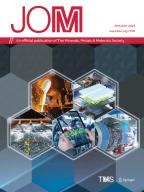Abstract
The U.S. Army has been using more and more titanium to either increase armor or reduce the weight of current combat vehicles. Future plans call for the development of combat vehicles that are 30 percent lighter. To achieve this target, the future-vehicle hull and turret will have to be manufactured using more ballistically efficient materials than rolled homogeneous steel armor. Lowcost titanium, with its good mechanical, ballistic, and corrosion properties and acceptable fabricability, offers the overall best afternative to achieving this objective.
Similar content being viewed by others
References
G. Campbell, “Titanium Applications for the Abrams Main Battle Tank” (Paper presented at the 1996 International Titanium Association Meeting, Las Vegas, NV, 1996).
M.S. Burkins and W. Love, “Effect of Annealing Temperature on the Ballistic Limit Velocity of Ti-6Al-4VELI,”Proceedings of the 16th International Symposium on Ballistics (Arlington, VA: ADPA, 1996).
A. Dixey, “Overview of the U.S. and European Market” (Paper presented at the 1996 International Titanium Association Meeting, Las Vegas, NV, 1996).
P.C. Turner and J.S. Hansen, “Low Cost Titanium for Dual Use Transportation Applications,”Metallic Materials for Lightweight Applications (40th Sagamore Arny Materials Research Conference Proceedings), ed. M.G.H. Wells et al. (Washington D.C.: U.S. Goverment Printing Office, 1994) p. 305.
P.J. Bania et al., “A New Low Cost Titanium Alloy,”Titanium ’92 (Warrendale, PA: TMS, 1992).
P.J. Bania, “Recent Developments in Low Cost Titanium,” in Ref. 4, p. 293.
R.G. Broadwell and J.R. Palitsch, “Bradley Fighting Vehicle Forged Commander’s Hatch,” in Ref, 4, p. 265.
Additional information
Jonathan S. Montgomery earned his Ph.D. in materials science at Northwestern University in 1990. He is currently a materials research engineer at the Army Research Laboratory. Dr. Montgomery is a member of TMS.
Martin G.H. Wells earned his Ph.D. in physical metallurgy at the Royal School of Mines, Imperial College, London University, in 1961. He is currently a team leader of metallurgy at the Army Research Laboratory. Dr. Wells is also a member of TMS.
Brij Roopchand earned his Ph.D. in metallurgical engineering at the University of Kentucky in 1976. He is currently a materials engineer at the U.S. Army TACOM-TARDEC.
James W. Ogilvy earned his B.A. in engineering at Wayne State University in 1951. He is currently retired from his position as a materials engineer at TARDEC.
Rights and permissions
About this article
Cite this article
Montgomery, J.S., Wells, M.G.H., Roopchand, B. et al. Low-cost titanium armors for combat vehicles. JOM 49, 45–47 (1997). https://doi.org/10.1007/BF02914684
Issue Date:
DOI: https://doi.org/10.1007/BF02914684
